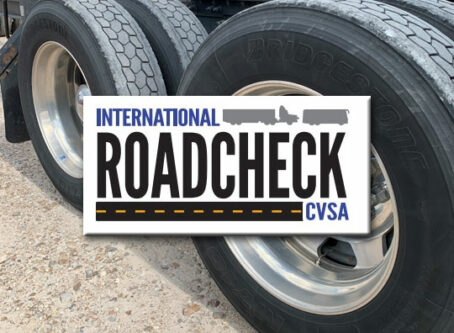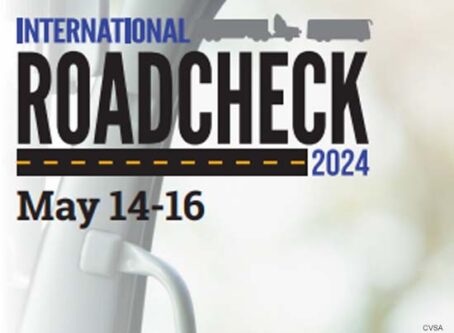California Senate panel to discuss autonomous trucks, ticket cameras
Two California bills of note are scheduled for consideration next week in a Senate committee.
The first bill is intended to slow down efforts to put autonomous large trucks on state roadways.
Since 2015, the operation of autonomous trucks on California roadways is prohibited. State law, however, allows for testing and operation of autonomous vehicles weighing less than 10,000 pounds without a driver behind the wheel.
The state Department of Motor Vehicles is considering changes to the ban on autonomous trucks.
Autonomous trucks challenge
The bill previously approved by the full Assembly addresses a possible rule change. Sponsored by Assemblymember Cecilia Aguiar-Curry, D-Winters, AB316 would restrict the use of autonomous trucks on California roadways.
Specifically, the operation of autonomous vehicles with a gross vehicle weight of at least 10,001 pounds would be prohibited from operation for testing purposes, transporting goods or transporting passengers without a “human safety operator physically present” in the vehicle during operation.
The DMV would be required to submit a policy report at least five years after testing. At that time, a legislative oversight hearing would follow. Assuming there is legislative approval, the DMV would still need to wait another year before issuing a permit.
Speaking at a recent Senate Transportation Committee hearing on the bill, Aguiar-Curry told committee members her bill places a needed guardrail on the deployment of autonomous trucks on state roads.
“Testing and deployment of light-duty autonomous vehicles in California has been fraught with malfunctions, including autonomous vehicles blocking traffic by suddenly stopping in the middle of the road, driving through emergency response scenes, impeding emergency vehicles and causing accidents,” she said.
She added there is nothing about a human operator that prevents the autonomous trucking industry from testing and deploying autonomous vehicles anywhere in California.
“The only conceivable motivation for rushing forward without a monitor in the cab is to increase profits at the risk of public safety and the livelihoods of our trained expert trucking workforce,” Aguiar-Curry testified.
Critics say the bill is too restrictive. They question whether lawmakers should be involved.
The Senate Appropriations Committee is scheduled to discuss the bill on Aug. 21. If approved there, AB316 would head to the Senate floor.
OOIDA backs legislative action
The Owner-Operator Independent Drivers Association says while autonomous technologies might improve safety under certain conditions, they create new risks with dangerous outcomes.
OOIDA President Todd Spencer adds it is difficult to fully understand what effect autonomous vehicles will have on the trucking industry.
“Without more data about how AVs will function and their impact on the industry, OOIDA is concerned that legislators and regulators will put on blinders and push for more technology as the answer to the industry’s problems without considering the negative impacts of these technologies,” Spencer wrote in a previous letter to Aguiar-Curry. “It is difficult to fully understand what effect AVs will have on the trucking industry.
“Regardless of their potential, it is important to understand the implications that AVs will have on public roadways.”
In addition to safety concerns, Spencer said it is important for California to “more fully consider the practical implications that eliminating the human driver from the cab might have on the economy.”
Ticket camera use
The Senate Appropriations Committee is also scheduled on Aug. 21 to discuss a bill that would expand the state’s authority to use automated ticket cameras.
The Golden State already authorizes the use of red-light cameras. The ticketing tool is used in more than 30 areas around the state. Speed cameras, however, are prohibited.
AB645 would authorize a five-year pilot program to utilize speed enforcement cameras in areas described as “safety corridors.” Areas covered include those with a high number of crashes, where street racing events are common, and in school zones.
Freeways and expressways are excluded.
The bill would apply to the cities of Glendale, Los Angeles, Long Beach, Oakland, San Jose, and the city and county of San Francisco.
Locales could operate up to 125 cameras. The number of cameras permitted would be based on population.
Warnings would be issued to violators for the first 60 days. After that, fines for exceeding the posted speed by 11 to 15 mph would be $50. Escalating fines would top out at $500 for traveling at least 100 mph above the posted speed.
First-time violators traveling 11 to 15 mph over the posted speed would receive warnings.
Ticket revenue would be used to administer the program and pay for “traffic calming measures.”
Arguments in opposition and support
OOIDA officials say the focus on the revenue-generating devices ignores the more logical and reasoned approach to roads and traffic: keep traffic moving in as safe a manner as possible.
The Western States Trucking Association previously told lawmakers AB645 is “excessively overbroad” for a pilot program, stating:
“It authorizes an undefined number of speed cameras to enforce any speed law, either through a fixed or mobile radar or laser system or any other electronic device, within six California cities.”
Supporters say the use of the enforcement tool makes travel safer. They add that it reduces police interactions with drivers while maintaining driver accountability. LL









